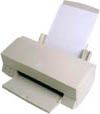The Prepositional Phrase
Recognize a prepositional phrase when you find one.
At the minimum, a prepositional phrase will begin with a preposition and end with a noun, pronoun, gerund, or clause, the "object" of the preposition.
The object of the preposition will often have one or more modifiers to describe it.
These are the patterns for a prepositional phrase:
Preposition + Noun, Pronoun, Gerund, or Clause
Preposition + Modifier(s) + Noun, Pronoun, Gerund, or Clause
Here are examples of the most basic prepositional phrase:
At home
At = preposition; home = noun.
In time
In = preposition; time = noun.
From Richie
From = preposition; Richie = noun.
With me
With = preposition; me = pronoun.
By singing
By = preposition; singing = gerund.
About what we need
About = preposition; what we need = noun clause.
Most prepositional phrases are longer, like these:
From my grandmother
From = preposition; my = modifier; grandmother = noun.
Under the warm blanket
Under = preposition; the, warm = modifiers; blanket = noun.
In the weedy, overgrown garden
In = preposition; the, weedy, overgrown = modifiers; garden = noun.
Along the busy, six-lane highway
Along = preposition; the, busy, six-lane = modifiers; highway = noun.
Without excessively worrying
Without = preposition; excessively = modifier; worrying = gerund.
Understand what prepositional phrases do in a sentence.
A prepositional phrase will function as an adjective or adverb. As an adjective, the prepositional phrase will answer the question Which one?
Read these examples:
The book on the bathroom floor is swollen from shower steam.
Which book? The one on the bathroom floor!
The sweet potatoes in the vegetable bin are green with mold.
Which sweet potatoes? The ones forgotten in the vegetable bin!
The note from Beverly confessed that she had eaten the leftover pizza.
Which note? The one from Beverly! That thief!
As an adverb, a prepositional phrase will answer questions such as How? When? or Where?
Freddy is stiff from yesterday's long football practice.
How did Freddy get stiff? From yesterday's long football practice!
Before class, Josh begged his friends for a pencil.
When did Josh do his begging? Before class!
Feeling brave, we tried the Dragon Breath Burritos at Tito's Taco Palace.
Where did we eat the spicy food? At Tito's Taco Palace!
A prepositional phrase will never contain the subject of a sentence.
Sometimes a noun within the prepositional phrase seems the logical subject of a verb. Do not fall for that trick! You will never find a subject in a prepositional phrase.
Read this example:
Neither of these cookbooks contains the recipe for Manhattan-style squid eyeball stew.
Cookbooks do indeed contain recipes. In this sentence, however, cookbooks is part of the prepositional phrase of these cookbooks. Neither—whatever a neither is—is the subject for the verb contains.
Neither is singular, so you need the singular form of the verb, contains. If you incorrectly identified cookbooks as the subject, you might write contain, the plural form, and thus commit a subject-verb agreement error.
Some prepositions—such as along with and in addition to—indicate "more to come." They will make you think that you have a plural subject when in fact the subject is singular. Do not fall for that trick either!
Read this example:
Tommy, along with the other students, breathes a sigh of relief as Professor Markham announces that she is postponing the due date for the research essay.
Logically, more than one student is happy with the news. But Tommy is the only subject of the verb breathes. His classmates might count in the real world, but in this sentence, they do not matter; they are irrelvant because they are in a prepositional phrase.
©1997 - 2025 by Robin
L. Simmons
All Rights Reserved.
